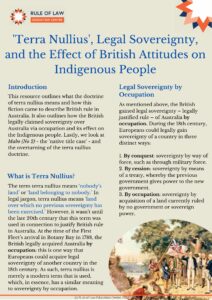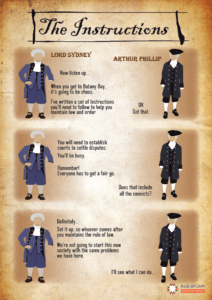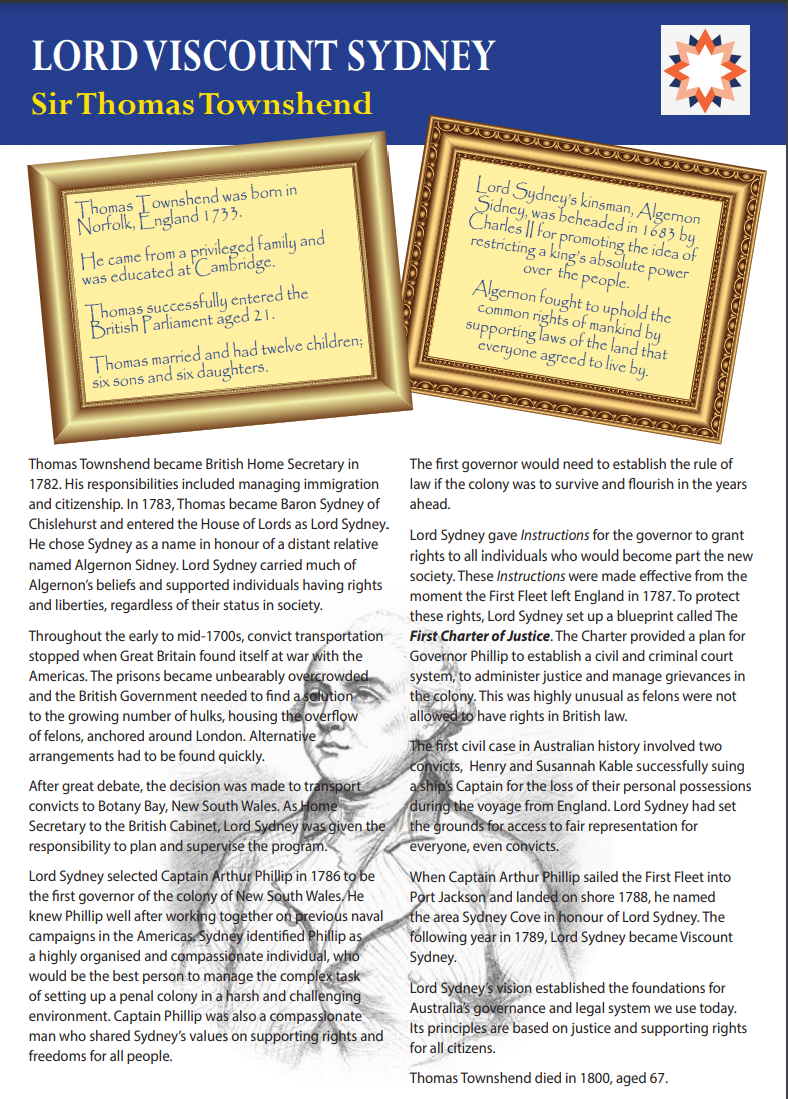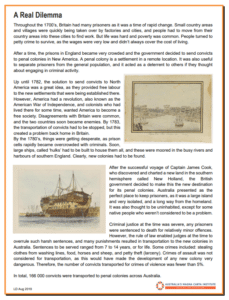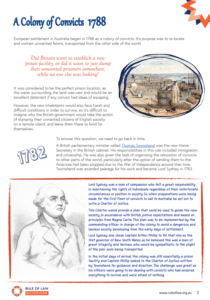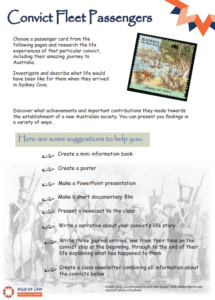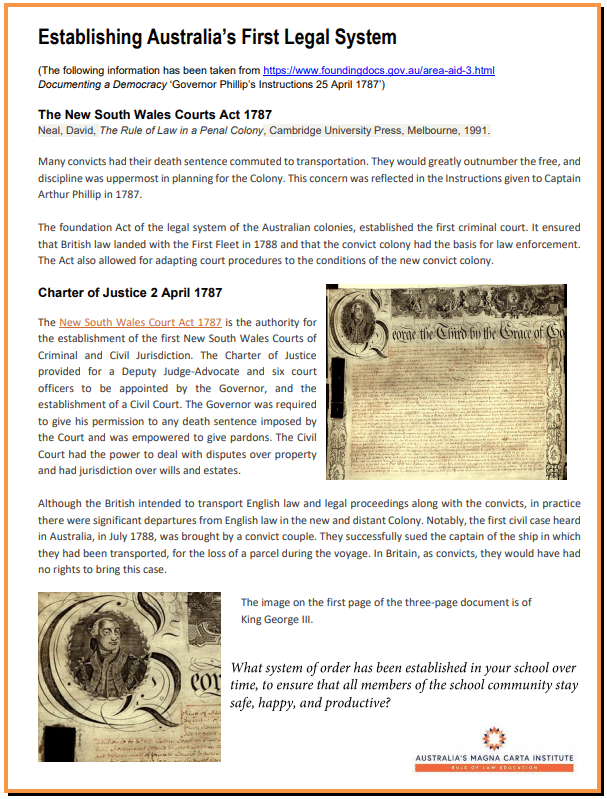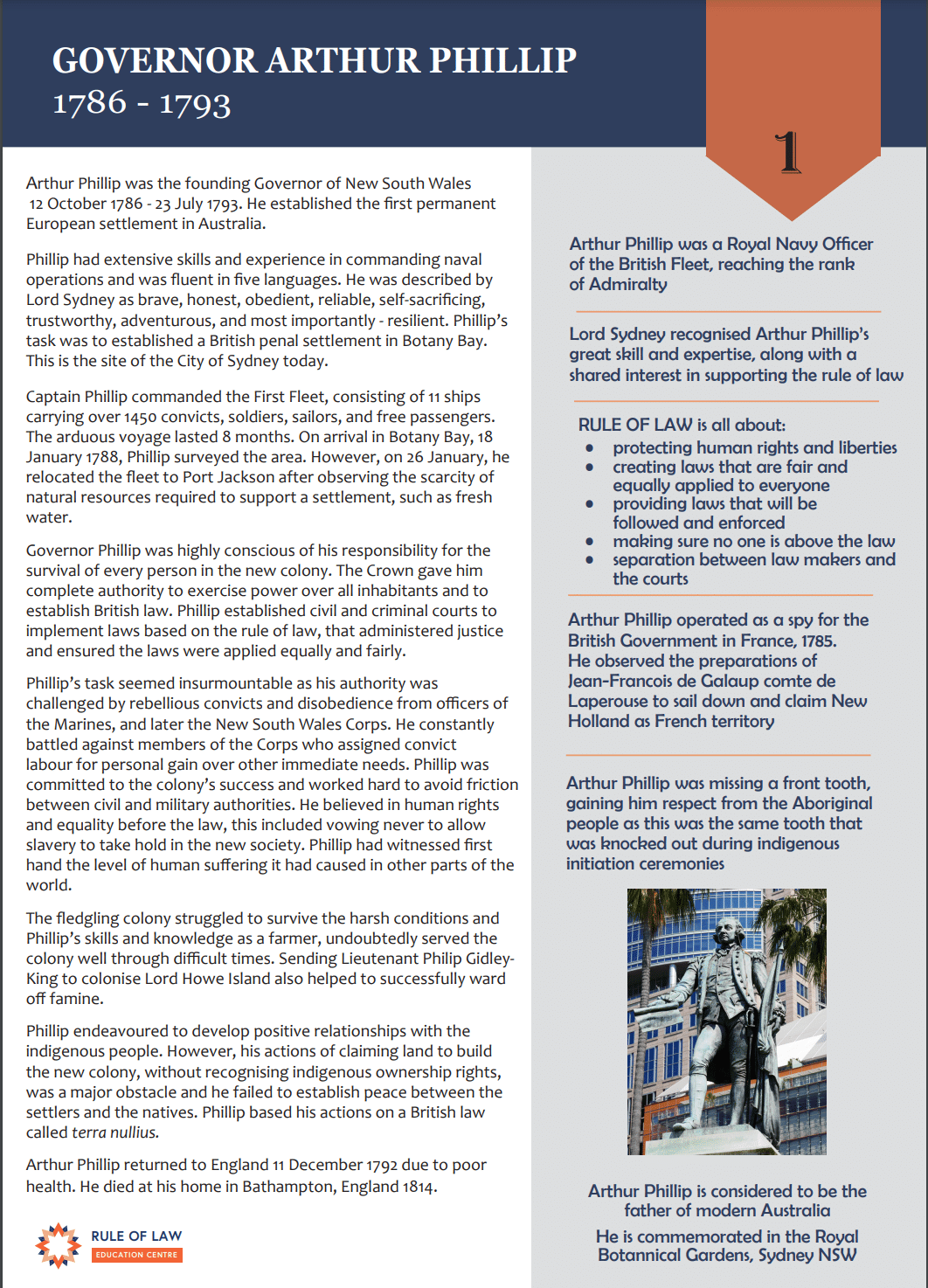Explainers
Curriculum links and program ideas
Civics, Citizenship and Laws
Magna Carta and Human Rights
Australian Colonies
Democracy and Australian Governance
Who was the city of Sydney named after?
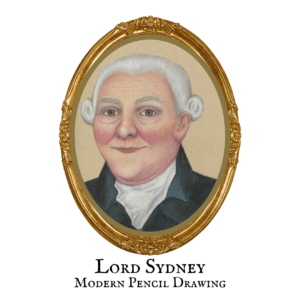 While many people around the world are familiar with the city of Sydney, few people, even those residing in Sydney, know who it is named after. The city of Sydney bears the name of Thomas Townshend, who later became Lord Sydney. This resource will take you through the ascendancy of Thomas Townshend, why he decided to adopt the name Lord Sydney for his Barony upon becoming a member of the House of Lords, and how he inspired the rule of law in the new colony of NSW.
While many people around the world are familiar with the city of Sydney, few people, even those residing in Sydney, know who it is named after. The city of Sydney bears the name of Thomas Townshend, who later became Lord Sydney. This resource will take you through the ascendancy of Thomas Townshend, why he decided to adopt the name Lord Sydney for his Barony upon becoming a member of the House of Lords, and how he inspired the rule of law in the new colony of NSW.
What’s in a Name…
Thomas Townshend was first elected to the House of Commons at the age of 21 in 1754 and later, in 1782, he became British Home Secretary where he was responsible for overseeing citizenship and immigration. During this time was the American War of Independence, where the American colonies were fighting for independence from England. Townshend as British Home Secretary had the unenviable task of working to negotiate a peace treaty with the ‘revolted American colonies’ and trying to resettle and guarantee the rights of the loyalist. He was also one of the few people in English Parliament who actually backed the American colonists.
In 1783 Townshend was recommended for a peerage for his work and chose the name ‘Sydney’ for his Barony in memory of his distant uncle, Algernon Sidney. From then on, Thomas Townshend was known as Lord Sydney.
Why be named after Algernon Sidney?
When King Charles II became King of England in 1660 he declared that God had put him on the throne and only God could remove him.
The people knew that, by this declaration, King Charles II asserted that his word would be final and could not be challenged; he would not follow any laws, would arbitrarily tax the people, throw people in prison on a whim, take peoples’ property, wives and possessions. He would not be accountable to anyone.
As a radical politician and theorist, Sidney fiercely opposed the idea of the divine right of Kings and wrote a series of documents called the Discourses. These manuscripts asserted that:
“Government is not instituted for the good of the governor but of the governed”
“That which is not just is not law and should not be obeyed”
Sidney believed the people (through their delegated power to Parliament) have the power over Kings and that the country is governed by LAWS and not the arbitrary whim of a King.
King Charles II did not take to kindly to Sidney’s words and he was promptly beheaded. He was the last person ever to be beheaded for invoking the Magna Carta.
Sidney also influenced the writers of the American Declaration of Independence. Thomas Jefferson, one of the Founding Fathers and principal author of the American Declaration of Independence acknowledged Algernon’s influence on the document and said his manuscripts were “probably the best elementary book on government” with the line “we hold these truths to be self-evident: that all men are created equal” said to be inspired by Algernon’s work.
It was this legacy that Thomas Townshend sought to honour in deciding upon the name Lord Sydney for himself. Like Algernon, Thomas Townshend (now Lord Sydney) upheld much of Algernon’s beliefs and supported the rights and liberties of the people, regardless of their status.
Role and Influence in the Colony
As British Home Secretary, Lord Sydney was tasked with the growing number of convicts in Hulks, moored on the Thames River.
These convicts had been generally sentenced to death for crimes such as burglary and then reprieved to a sentence of transportation to the American colonies for 7 to 14 years. After the American War of Independence, sending them to the American colonies was not an option. As a result, more and more convicts were moved to the Hulks awaiting a decision by Parliament upon advice from Lord Sydney.
Lord Sydney knew that if NSW was to be a successful colony, it must be structured to ensure the eventual emancipation of convicts and to settle them as free people. The colony must not just be about punishment, it must also provide a chance for reformation.
For example, Henry Kable was convicted of housebreaking with his dad and uncle in 1783. They were both hung- but he received a reprieve of his sentence to 7 years transportation to the colonies. He was transported to Australia with the First Fleet and landed in 1788. That is 5 years after his sentence, which means that, officially, Henry should only have 2 years of his sentence to serve in Australia. What would happen then? Would they have to bring all the convicts back? Or is it expected they could start a new life there, a second chance, and a chance for reformation.
Lord Sydney set up a colony that, although was not always perfect, and as well planned as we would have liked, planted the seeds for the free and prosperous nation we now enjoy- with the genesis of justice, fairness, equality and the rule of law.
He achieved this in a few ways:
1. Choice of Governor
He chose Captain Arthur Phillip in 1786 to be the first Governor of the colony of NSW. Governor Phillip was a compassionate man who shared Lord Sydney’s beliefs on supporting the rights and freedoms of all people. As Phillip would have the final say in the colony, there was always the potential for him to rule like a tyrant or dictator. In one of his letters, Phillip proclaimed that “there can be no slavery in a free land and consequently no slaves.” The new colony was not to be a nation of slaves and the Governor needed to judiciously use his power
2. First Charter of Justice
Originally the first designs for the colony were for Military rule. However, there was a change of design and a new set of instructions for the colony was issued.
Lord Sydney developed a plan called The First Charter of Justice to establish a civil and criminal court to protect these rights and administer justice- and these Courts would follow, where possible/applicable English law and traditions. This was a pioneering step, since convicts were considered Dead to the Law. Imagine someone who is sentenced to death- they have no legal rights, they have no rights to buy or sell property, give evidence or take action in Court. This is how English law officially saw convicts (and those sitting in goals/hulks in England).
By having a legal system in the new colony, the power of the Governor, the marines and all those in power could be challenged and determined by an independent arbiter. This also had the assumption that those in the colony (ie the convicts) would be able to use the Courts (which they couldn’t have done in England).
This might not sound ground- breaking- but it was one of the major forces that shaped our colony and the freedoms we have in Australia today. Lord Sydney’s decision to follow his ancestor Algernon Sidney and to promote a colony where the Governor and all those in power, were subject and accountable to the law (and consequently the courts)- meant that the convicts, the businessmen and people in the colony could live and work freely. It meant that land grants could be made to convicts on expiration of their sentence and that they had the freedom to own property, freedom to sell property, freedom to start a business, freedom to choose who they could marry, freedom to start a newspaper and criticise those in power. They had these freedoms because they had rights and they knew that they had a justice system that would protect their rights- even if they were a convict- and they could legally take action to protect their rights.
Lord Sydney laid the foundations for Australia’s governance and legal system today. Since 1788, these principles acknowledge the rule of law and the importance of ensuring the law is applied equally and fairly to all citizens, regardless of whether they are of convict or lordship status.

